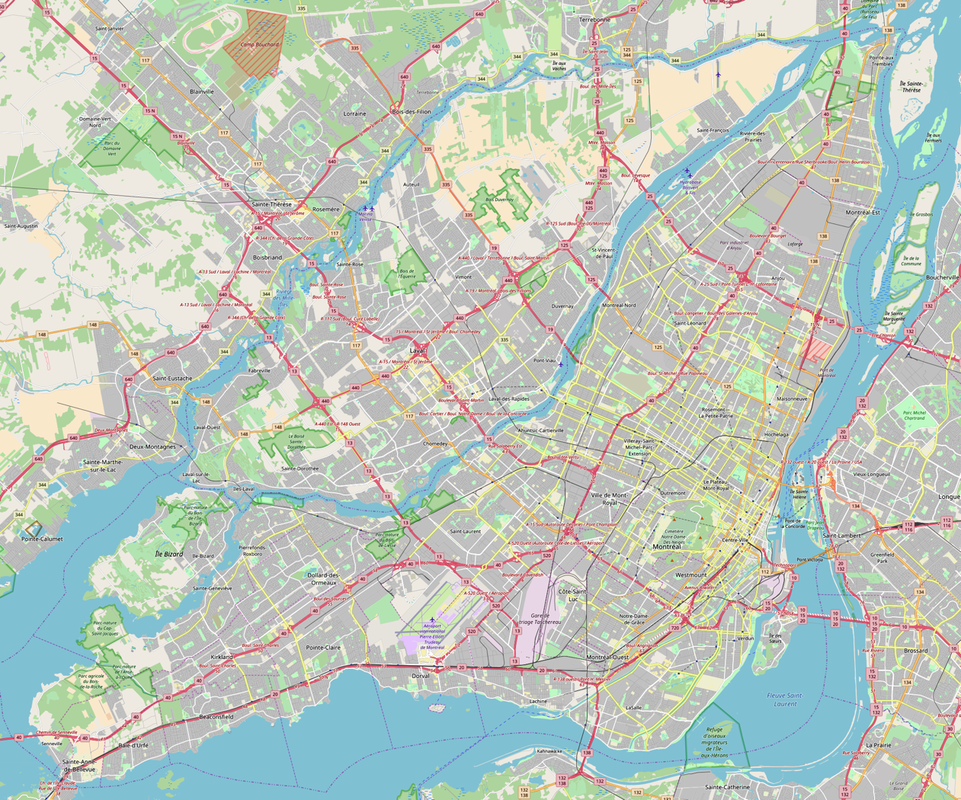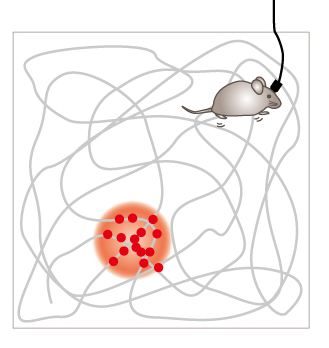Mission Cerveau Nord - BrainReach North
|
Moving to a new place can be tough for a variety of reasons. One reason is that we usually don’t know how to get around in our new environment. At first, the surroundings are unfamiliar, but we gradually learn things about our new neighbourhood, such as the route to school or to a friend’s house. Map of Montréal. Can you imagine how hard it might be for someone to navigate the city if they just moved here? But how do our brains create maps of our environments? Insights into how the brain helps us navigate environments were first discovered by Dr. John O’ Keefe at University College London. Dr. O’Keefe was looking at neurons in the hippocampus, a region involved in memory and spatial navigation. Dr. O’Keefe and his colleagues inserted electrodes into the hippocampal region of rats and recorded the animals’ brain activity while they explored a new environment. The researchers discovered neurons that fired only when the rat was in a particular part of the environment (e.g., if the rat was in the centre of the platform). The hippocampus in the human brain There were several hypotheses for why these neurons only fired when the rat was in a certain place. The first was that the neurons were responding to sounds or lights coming from a particular direction. This was ruled out since, if this was the case, these neurons would fire only when the rat was facing a certain direction (since sensory cues can be different when facing different directions). Other experiments conducted also ruled out the possibility of certain smells causing the neurons to fire. An image of a rat with an electrode placed in its brain. The gray lines represent the rat’s path through its environment. The red circles indicate the place where neurons fired. Another hypothesis was that the neurons responded to a combination of a stimulus and a behaviour (such as running, grooming, sniffing). However, this hypothesis was also disproven, as the neurons did not fire if the animal performed the same behaviour in different locations even if the sensory stimuli was the same.
The final hypothesis that the researchers tested was that these class of neurons formed a map of the environment, with each neuron representing a small part of this map. This hypothesis was supported by studies which found that animals with damage to the hippocampus had difficulty with spatial navigation. The hypothesis became known as the cognitive map theory. The neurons that were found to create the map were named “place cells”. This study marked the first understanding of the neuroscience behind spatial navigation. Dr. O’Keefe’s discovery remains an important contribution to our understanding of the brain. His discovery of place cells earned him the Nobel Prize in Physiology or Medicine in 2014. Fun fact: Dr. O’Keefe completed his graduate studies at McGill! So, the next time you get lost remember that your place cells are trying hard to build a map of the area to help you find your way! Written by Dhruv Mehrotra Edited by Stephanie
0 Comments
Leave a Reply. |
LINKS FOR TEACHERS
AuthorLearn more about our bloggers on the "Meet Our Team" page. Archives
May 2022
Categories
All
|
|
Return to home page
|
Go to BrainReach Montreal/ Mission Cerveau
|



 RSS Feed
RSS Feed





